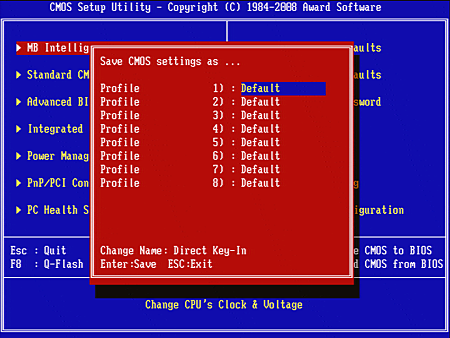11-Way P45 Motherboard Shootout
EP45-DQ6 BIOS And Overclocking
| FSB Frequency | 100 to 1200 MHz (1 MHz) |
| Clock Multiplier Adjustment | Yes |
| DRAM Ratios | 1.0, 1.2, 1.25, 1.5, 1.60, 1.67, 2.0 |
| PCIe Clock | 90 to 150 MHz (1 MHz) |
| CPU Vcore | 0.50 - 1.60 - 2.30 Volts (0.00625, 0.020 Volts) |
| CPU FSB Voltage | 0.80 to 2.10 Volts (0.02 - 0.10 Volts) |
| Northbridge (MCH) | 0.80 to 1.80 Volts (0.02 - 0.10 Volts) |
| Southbridge (ICH) | 1.00 to 2.30 Volts (0.02 - 0.10 Volts) |
| DRAM Voltage | 1.80 to 3.00 Volts (0.02 - 0.10 Volts) |
| CAS Latency Range | tCAS : 3-7 ; tRCD : 1-15 ; tRP : 1-15 ; tRAS : 1-63 |
Gigabyte addresses overclocking needs with a full array of settings and values to match all but the most extreme configurations.
Gigabyte’s “Motherboard Intelligent Tweaker” menu starts off with CPU multiplier, bus frequency, boot strap, and memory ratio settings.
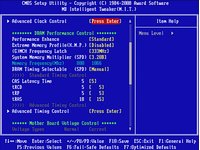
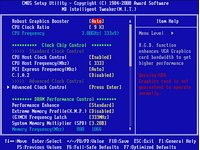
Scrolling down the M.I.T. menu reveals basic memory timing controls and an “Advanced Timing” sub-menu link.
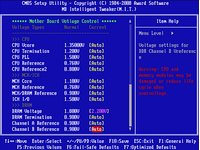
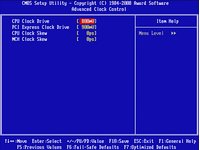
The bottom of the M.I.T. menu provides critical voltage controls, but only two GTL REF registers.
Chosing “Advance Clock Control” reveals a sub-menu with skew and drive strength settings.
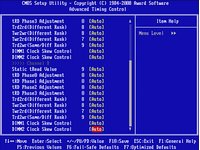
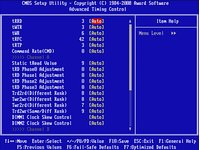
The “Advanced Timing Controls” sub-menu has enough settings to consume nearly two pages.
Up to eight complete BIOS configurations can be stored as user profiles, making it easy to return to a setting that works after trying one that doesn’t.
Get Tom's Hardware's best news and in-depth reviews, straight to your inbox.
We didn’t grab a screen shot of the Security Chip menu, since it only shows “Enable” or “Disable”. The Security Chip is a DES feature with 2048-bit hardware-based encryption that can be applied to a hard drive or partition, with keys stored in the BIOS or on a USB flash drive.
Current page: EP45-DQ6 BIOS And Overclocking
Prev Page EP45-DQ6 Onboard Devices Next Page EP45-DQ6 Software And Accessories-
nickchalk Where are the lower price P45 M/B ?Reply
Asus P5Q pro is out for €110 and P5Q deluxe for €165 the price difference is about 70$ in Greece. -
Proximon I suppose I can get some good from having read this. Did you get paid by the word? Maybe next time you could just put together a complete features chart so that we can have some convenient comparison? You know, so someone could go to a chart and see at a glance which boards had eSATA or firewire, or 8 USB.Reply
-
JPForums I'd rather have the overabundance of information than a lack of information. Presentation could use a little refining (I.E. comparison charts and the likes), but having the relevant information available at least is a good thing.Reply -
the introduction and specifics are nice, the comparision isn't. so, why don't you test with an 8500 or qx9650? 6850 are outdated... and a mobo handling a c2d doesn't mean it can handle a quad too, see P5K for example (it stinks when it comes to a q6600).Reply
-
Crashman procithe introduction and specifics are nice, the comparision isn't. so, why don't you test with an 8500 or qx9650? 6850 are outdated... and a mobo handling a c2d doesn't mean it can handle a quad too, see P5K for example (it stinks when it comes to a q6600).Reply
Tom's Hardware wants the performance of current articles to reflect that of recent articles, so a "standard test platform" was chosen a while ago. It will get updated, but probably not before the new socket becomes widely available. -
zenmaster I would have liked to see something such as a P35 and an X48 as controls to help analyze the P45 Performance.Reply
In otherwords, What is the P45 Gaining me over the older P35.
What would I gain by going to the X48. (Or Lose) -
Crashman zenmasterI would have liked to see something such as a P35 and an X48 as controls to help analyze the P45 Performance.In otherwords, What is the P45 Gaining me over the older P35.What would I gain by going to the X48. (Or Lose)http://www.tomshardware.com/reviews/intel-p45-chipset,1961.htmlReply -
johnbilicki The first 17 pages were filled with nothing but junk from ASUS. Do us a favor: don't even bother featuring or *MENTIONING* anything for any reason from a company that refuses to RMA 200-400 dollar brand new motherboards with anything other then used and usually broken junk. It destroyed my enthusiasm for the article.Reply -
dobby nickchalkWhere are the lower price P45 M/B ?Asus P5Q pro is out for €110 and P5Q deluxe for €165 the price difference is about 70$ in Greece.Reply
the p5q PRo is a p43 board, i should know i have one
